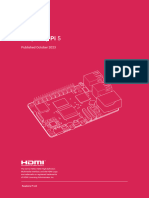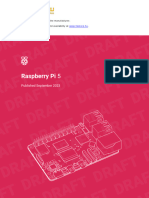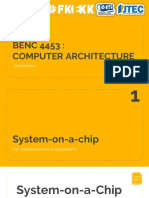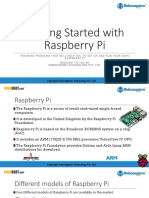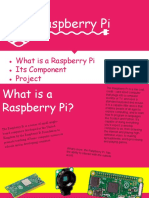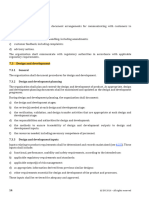0% found this document useful (0 votes)
10 views13 pagesMAM Unit 1 Notes 2
The document outlines the course details for 'Microprocessors and Microcontrollers' focusing on the Raspberry Pi 5, including its architecture, GPIO functionality, and recommended power supplies. It highlights the technical specifications of the Raspberry Pi 5, such as its quad-core ARM Cortex-A76 CPU, VideoCore VII GPU, and various connectivity options. Additionally, it discusses potential applications of the Raspberry Pi 5 in robotics, autonomous navigation, industrial automation, and machine vision.
Uploaded by
Chaitanya BelekarCopyright
© © All Rights Reserved
We take content rights seriously. If you suspect this is your content, claim it here.
Available Formats
Download as PDF, TXT or read online on Scribd
0% found this document useful (0 votes)
10 views13 pagesMAM Unit 1 Notes 2
The document outlines the course details for 'Microprocessors and Microcontrollers' focusing on the Raspberry Pi 5, including its architecture, GPIO functionality, and recommended power supplies. It highlights the technical specifications of the Raspberry Pi 5, such as its quad-core ARM Cortex-A76 CPU, VideoCore VII GPU, and various connectivity options. Additionally, it discusses potential applications of the Raspberry Pi 5 in robotics, autonomous navigation, industrial automation, and machine vision.
Uploaded by
Chaitanya BelekarCopyright
© © All Rights Reserved
We take content rights seriously. If you suspect this is your content, claim it here.
Available Formats
Download as PDF, TXT or read online on Scribd
/ 13






